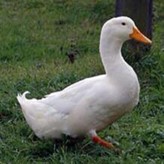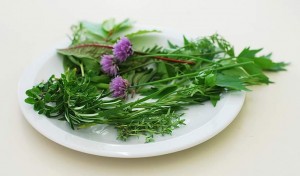 Most people don’t realize that the honeybees zooming about in our gardens are some of the most important creatures on the planet. In their search for a meal of nectar and pollen, they play a critical role in helping plants set fruit and reproduce. It’s hard to believe, but an incredible 91% of the estimated 240,000 flowering plant species worldwide, require the help of these pollinators to survive. If there are no insects to pollinate the flowers, there will be no fruit or vegetables and no seed production for the next generation. Despite the important service these pollinators provide, they have been largely ignored and are now threatened by habitat loss, pesticide use and disease. Wild honeybee populations have dropped 25 percent since 1990. A continuing decline in pollinator activity puts most ornamental plants – as well as much of our food supply – into jeopardy. Here are four easy ways you can help – right in your own backyard:
Most people don’t realize that the honeybees zooming about in our gardens are some of the most important creatures on the planet. In their search for a meal of nectar and pollen, they play a critical role in helping plants set fruit and reproduce. It’s hard to believe, but an incredible 91% of the estimated 240,000 flowering plant species worldwide, require the help of these pollinators to survive. If there are no insects to pollinate the flowers, there will be no fruit or vegetables and no seed production for the next generation. Despite the important service these pollinators provide, they have been largely ignored and are now threatened by habitat loss, pesticide use and disease. Wild honeybee populations have dropped 25 percent since 1990. A continuing decline in pollinator activity puts most ornamental plants – as well as much of our food supply – into jeopardy. Here are four easy ways you can help – right in your own backyard:
- Provide an abundant source of food. Include lots of nectar- and pollen-rich plants in your garden, such as old-fashioned flowers and wildflowers. A succession of blooming annuals, perennials and shrubs will ensure nectar and pollen are available throughout the growing season
- Go organic. Many pesticides – even organic ones – are toxic to bees. In the short term, these pesticides may provide a quick knockdown to the attackers. In the long run, you expose yourself, family, pets, wildlife and pollinators to toxic chemicals, and risk disrupting the natural ecosystem. If you do apply a pesticide, make sure you use it carefully and selectively. Never spray when blossoms are open or when bees are present.
 Provide shelter. Bees need shelter to hide from predators, get out of the elements and rear their young. As raising honeybees may not be something you yourself are interested in, you can still provide a safe environment for the wild honeybees to live. In the wild, honey bees nest in tree hollows or other cavities. Leaving undisturbed wooded areas can aide in providing these shelters.
Provide shelter. Bees need shelter to hide from predators, get out of the elements and rear their young. As raising honeybees may not be something you yourself are interested in, you can still provide a safe environment for the wild honeybees to live. In the wild, honey bees nest in tree hollows or other cavities. Leaving undisturbed wooded areas can aide in providing these shelters.- Provide water. A water garden, birdbath or catch basin for rain will guarantee that pollinators can always find the water they need to survive.
Here are some interesting “Bee Facts”:
Scientific Name: Apis mellifera
Age of Species: 19 million years
Castes in colony: 3 (queen, workers,& drone)
Size of adult worker: ½ inch
Visits to fill honey stomach: 1,000 flowers
Bees must gather 10 lb nectar for 1 lb honey
Bees fly 55,000 miles for every lb of honey produced
1 quart honey = 3 lb
- The average American consumes a little over one pound of honey a year.
- In the course of her lifetime, a worker bee will produce 1/12th of a teaspoon of honey.
- Theoretically, the energy in one ounce of honey would provide one bee with enough energy to fly around the world.
- While bees cannot recognize the color red, they do see ultraviolet colors.
- Unlike the stingers in wasps, the honeybee’s stinger is barbed. When the bee pulls away, the barb anchors the stinger in the victim’s body. The bee leaves the stinger and venom pouch behind and soon dies.


































Great post! I love bees! Thank you for sharing!
Unlike other insects, honeybees will work only one kind of flower on each flight path. That means if a bee leaves the hive and starts collecting apple pollen, they will only collect apple pollen on that particular flight. This makes them far more beneficial as pollinators than most people realize!
I’m glad you posted about the bees. As a new beekeeper, I’m obsessed.:)
We too are new beekeepers and can’t get enough information. It’s more than a little addicting watching them go in and out of that hive. Some good fun on a summer day would be “lining” bees. This is a technic used to follow bees back to the hive. Once you get the hang of it, it’s quite easy. Most likely your going to find them going to a hive in some fellows back yard. If they are wild bees, you may find you have the opportunity to keep the hive protected.
This past spring, I took up beekeeping with my six year old daughter. It has turned into a wonderful family activity. We have also taken up “bee lining” (aka “bee hunting”). We have so much fun doing it I have started a small website to help encourage this dying art. We are hoping to meet other enthusiasts. Please, take a look at http://www.beehunting.com if you are interested in bee lining.